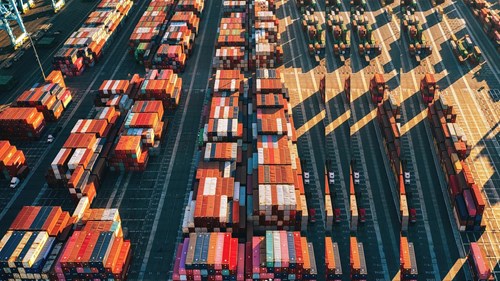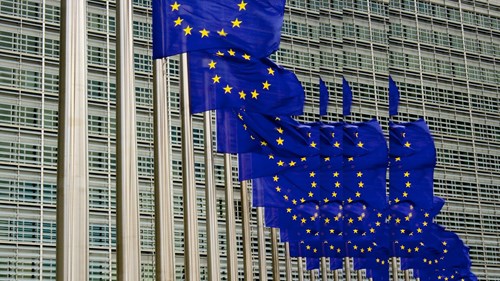The EU Carbon Border Adjustment Mechanism: What to prepare for
On 12 December 2022, during the fourth inter-institutional meeting on the EU’s proposed carbon border tax on certain imported products, known as the Carbon Border Adjustment Mechanism (hereafter “CBAM”), negotiators from the European Parliament, the Council and the European Commission (hereafter “Commission”) reached a provisional agreement. Because the transitional period for the new mechanism is scheduled to begin on 1 October 2023, now is the time for companies to prepare for the new mechanism.
Background
As a driver of the global environmental agenda, the EU aims to become the world’s first climate-neutral continent by 2050. The European Green Deal, presented by the Commission in December 2019, is a roadmap of policy initiatives designed to make the EU’s economy sustainable, an ambitious target. The milestone goal is to reduce EU greenhouse gas (GHG) emissions by at least 55% by 2030, compared to 1990 levels. The first set of legislative proposals designed to facilitate the emissions reduction and to align the EU’s climate, energy, transport, taxation and land use policies with this target was the “Fit for 55” package of July 2021. As part of this package, the proposal for a regulation of the European Parliament and of the Council establishing a carbon border adjustment mechanism aims to contribute to the EU’s climate neutrality objective while encouraging other countries to decarbonise their production processes by levelling the playing field in carbon pricing between EU producers and foreign producers.
The CBAM in a nutshell
The principal objective of the proposal for a CBAM is to equalise the carbon price between domestic products and imports, thereby addressing the risk of carbon leakage caused by asymmetrical environmental policies of third countries and to potentially incentivise them to put greener policies in place.
The CBAM is designed to complement the EU Emissions Trading System (hereafter “EU ETS”) and is intended to serve as an alternative means of reducing the risk of carbon leakage by allocating free ETS allowances to energy-intensive industries. Free allocation of allowances under the ETS will be gradually phased out as the CBAM is phased in. Until free allocations end, the CBAM will only apply to the proportion of emissions that do not receive free allowances under the EU ETS.
Thus, according to the provisional deal reached by the co-legislators, the CBAM will initially apply to imports from all third countries except those participating in the EU ETS or a linked mechanism from certain emissions-intensive sectors that are at greater risk of carbon leakage. Specifically: iron and steel, cement, aluminium, fertilisers, and electricity generation (as originally proposed by the Commission), hydrogen and certain precursors as well as some downstream products such as screws and bolts and similar articles of iron or steel. Indirect emissions will also be covered under certain conditions that are still under negotiation. The scope of the CBAM could be extended in the future; before the end of the planned transition period, the Commission will assess whether to also cover other goods at risk of carbon leakage, including organic chemicals and polymers; the goal, as reiterated by the Parliament, is to include all goods covered by the EU ETS by 2030.
The proposal foresees a transitional phase during which importers in these sectors will have to report their embedded GHG emissions but not pay the financial adjustments. Once the CBAM becomes fully operational, importers into the EU will need to obtain authorisation from a CBAM authority and purchase carbon certificates corresponding to the carbon price that would have been paid to produce the goods in the EU. Under the provisional agreement, the CBAM’s initial phase will begin in October 2023. The full CBAM will be phased in gradually while phasing out the free allowances under the revised EU ETS for the sectors concerned. When the transition phase will end has yet to be decided. In its original proposal, the Commission foresaw a transition period until 2025, as did the Council; the Parliament was in favour of prolonging it until 2026.
Last but not least, the provisional agreement establishes more centralised governance of the CBAM. Thus, rather than each Member State implementing the mechanism, the Commission is now expected to be authorised to administer most tasks as a central supervising authority.
What companies need to prepare for
The CBAM will bring about various changes for those involved in the sectors concerned. EU manufacturers, traders and importers, foreign exporters and all other parties that are potentially impacted by the mechanism should already start preparing to adapt to them.
In particular, businesses will have to prepare for a global supply chain review, assess the implications of the new mechanism on their business model and quantify their potential exposure. Another expected direct impact for EU companies will be higher import prices for covered goods, along with a general increase in the prices of any derivative products. At the same time, the measure provides an opportunity for businesses to review their ESG responsibility preparedness.
All EU importers in the covered sectors must be ready for the reporting obligations to which they will be subject during the transitional period, which will start on 1 October 2023, as established by the provisional agreement reached by the co-legislators. During this period, EU importers subject to the reporting obligation must:
- calculate the direct and indirect emissions that have arisen in the production process of the goods imported into the EU
- submit quarterly CBAM reports containing:
- the total quantity of each type of CBAM goods, specified per plant producing the goods in the country of origin;
- the total embedded emissions for each type of goods calculated in accordance with the method set out in Annex III of the proposed regulation;
- the total embedded indirect emissions in accordance with the calculation method to be established by the Commission in an implementing act.
- the total quantity of each type of CBAM goods, specified per plant producing the goods in the country of origin;
Importers who fail to submit CBAM reports will be subject to proportionate and dissuasive penalties.
Once the transitional period has elapsed and the implementation phase has started, companies will be subject to the financial impact of the carbon levy that will have to be paid under the CBAM, as well as the following additional compliance obligations:
- EU importers will have to register with national authorities to become “authorised declarants”;
- EU importers will have to calculate the embedded direct and indirect emissions of the goods they import into the EU;
- EU importers will have to purchase CBAM certificates covering the emissions embedded in the imported products;
- each authorised declarant will have to submit a CBAM declaration to the competent authority by 31 May each year, specifying:
- the total quantity and each type of goods imported during the previous calendar year;
- the total embedded emissions for the imported goods;
- the total number of CBAM certificates corresponding to the total embedded emissions in those goods imported into the EU in the preceding year.
- the total quantity and each type of goods imported during the previous calendar year;
Non-compliance with these provisions can result in high fines and even a complete withdrawal of the license to import into the EU.
Next steps
The provisional agreement is affected by the on-going negotiations regarding reform of the EU ETS. The Presidency of the Council has clearly stated that the CBAM regulation cannot be formally adopted until certain aspects relevant to the CBAM are agreed in the context of other related dossiers. Further negotiations on the EU ETS are planned for the next few days, and a final agreement is expected by the end of the week. Additional details on the duration of the CBAM transition period, the phasing out of the free allowances and the treatment of exports from the EU to third countries will not be available until then.
Once a full deal is reached, the agreement needs to be formally approved by the two co-legislators, the Council and the Parliament, before it is final. The regulation will come into force 20 days after its publication in the EU Official Journal.



